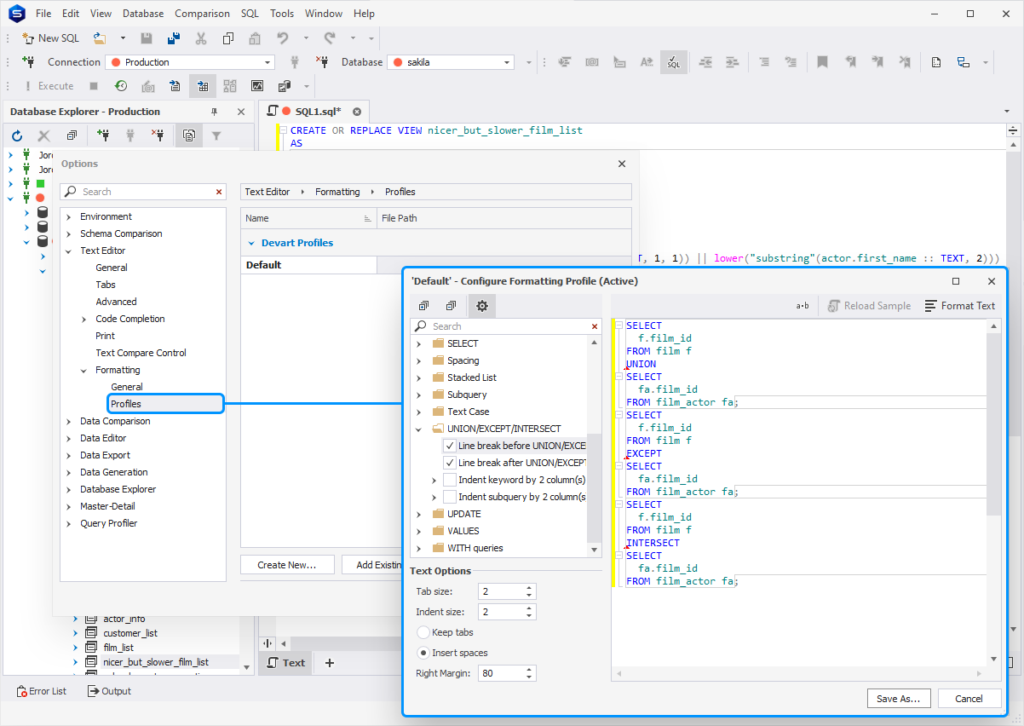Exploring the Best PostgreSQL GUI Tools: A Comprehensive Review

PostgreSQL GUI tools are software applications that provide a graphical user interface (GUI) for interacting with PostgreSQL databases. These tools offer a visual representation of the database structure and data, making it easier for users to manage and manipulate their databases. They often include features such as SQL editors, data viewers, schema viewers, and debugging tools, among others.
The importance of PostgreSQL GUI tools cannot be overstated. They simplify database management by providing an intuitive interface that abstracts complex SQL commands. This not only makes database management accessible to less technical users but also increases productivity for experienced database administrators by automating repetitive tasks. Furthermore, GUI tools often come with additional features like data visualization, performance monitoring, and database migration tools, which can provide valuable insights and streamline database operations.
In essence, PostgreSQL GUI tools are instrumental in bridging the gap between the technical complexity of database management and the user-friendly interaction that modern users expect. Whether you’re a seasoned database administrator or a beginner just starting out, these tools can significantly enhance your PostgreSQL experience.
Overview of PostgreSQL GUI Tools
PostgreSQL GUI tools are comprehensive software applications designed to facilitate interaction with PostgreSQL databases through a user-friendly graphical interface. These tools provide a visual platform that allows users to create, manage, and manipulate databases without the need for extensive SQL knowledge or command-line expertise.
At their core, PostgreSQL GUI tools serve as an intermediary between the user and the database. They translate user actions performed in the graphical interface into SQL commands that the PostgreSQL database can understand. This includes tasks such as creating tables, inserting data, running queries, and even complex operations like database migrations and performance tuning.
These tools often come equipped with a variety of features designed to simplify database management. This includes SQL editors with syntax highlighting and auto-completion, data viewers for easy data exploration, schema viewers for visualizing database structure, and debugging tools for troubleshooting database issues. Some GUI tools also offer advanced features like data visualization, performance monitoring, and integration with other databases or third-party services.
The importance of using a PostgreSQL GUI tool lies in its ability to make database management more accessible and efficient. For beginners, these tools provide a gentle introduction to PostgreSQL, allowing them to interact with databases without the steep learning curve associated with SQL and command-line interfaces. For experienced database administrators, GUI tools offer a productivity boost by automating repetitive tasks and providing useful tools for database optimization and troubleshooting.
In a world where data is king, PostgreSQL GUI tools are the trusty advisors, helping users navigate the realm of database management with ease and efficiency. Whether you’re managing a small database for a personal project or administering a large database for a multinational corporation, these tools can make your PostgreSQL journey smoother and more enjoyable.
Top PostgreSQL GUI Tools
In the realm of PostgreSQL management, several GUI tools have emerged as leaders, offering a blend of functionality, ease of use, and robust features. This section will delve into four of the top PostgreSQL GUI tools: pgAdmin, DBeaver, Navicat, and DataGrip. We’ll explore a brief description of each tool, along with their respective pros and cons.
dbForge Studio for PostgreSQL

dbForge Studio for PostgreSQL is a cross-platform GUI client and a universal tool for PostgreSQL database development and management. This tool is compatible with various operating systems, including Windows, Linux, and macOS. It allows users to create, develop, and execute queries, as well as edit and adjust the code to their requirements in a user-friendly interface. Additionally, it provides functionality for PostgreSQL data reporting, data editing, data import and export, building pivot tables, and establishing master-detail relations.
Pros:
- Cross-platform: Compatible with Windows, Linux, and macOS.
- Comprehensive toolset: Offers a wide range of features for database management, including schema design, SQL coding, data import/export, and database comparison and synchronization.
- User-friendly: Provides an intuitive interface that allows users to easily tailor the code to their specific requirements.
- Data Reporting and Analysis: Facilitates the creation of PostgreSQL data reports, data editing, data import and export, building pivot tables, and establishing master-detail relations.
Cons:
- Commercial Software: Unlike some other database GUI tools, dbForge Studio for PostgreSQL is not free. While it offers a free trial, continued use requires a paid license.
- Learning Curve: While dbForge Studio is packed with features, it can be overwhelming for beginners. Some users might find it takes time to learn how to use all of its capabilities effectively.
pgAdmin
pgAdmin is an open-source, full-featured PostgreSQL management tool. It’s widely used due to its comprehensive set of features and compatibility with most operating systems.
Pros:
- Cross-platform: Works on Linux, macOS, and Windows.
- Stable and fast in responding.
- Comprehensive documentation and large community support.
Cons:
- Installation requires command-line knowledge, which can be challenging for beginners.
- The interface can be heavy and overwhelming for new users.
DBeaver
DBeaver is a GUI database tool that supports a variety of databases, including PostgreSQL.
Pros:
- Supports multiple databases, not just PostgreSQL.
- Easy to start with, requiring no command-line interface knowledge.
- Offers a free version for users to explore its features.
Cons:
- The desktop version’s performance depends on your machine capabilities.
- DBeaver may be more expensive than other database tools
Navicat
Navicat is a commercial database management tool that simplifies communication with databases, including PostgreSQL.
Pros:
- Easy installation process requiring minimal command lines.
- Offers a job scheduler to improve team productivity.
- Provides data visualization via an in-built Data Modeling Tool.
Cons:
- High pricing, with the cheapest plan starting from $119 per year.
- Some features, like Data Modeling Tool and Chart, are only available in the Enterprise plan.
DataGrip
DataGrip is a commercial database client from JetBrains, supporting multiple operating systems and databases.
Pros:
- Easy to use and configure.
- Offers plugins and dialects for various databases.
- Provides DDL and DML automation tools.
Cons:
- Not open-source, costs $199 a year.
- Primarily meant for querying, not suitable if you’re looking for an admin web app to be deployed in your cloud.
In conclusion, the choice of a PostgreSQL GUI tool largely depends on your specific needs, budget, and technical expertise. Each of these tools offers unique features and capabilities, and understanding their pros and cons can help you make an informed decision.
Comparison of PostgreSQL GUI Tools
When choosing a PostgreSQL GUI tool, it’s important to consider the features, compatibility, and pricing of each option. Below is a comparison table of five popular PostgreSQL GUI tools: dbForge Studio for PostgreSQL, pgAdmin, DBeaver, Navicat, and DataGrip.
| Tool | Features | Compatibility | Pricing |
| dbForge Studio for PostgreSQL | Comprehensive toolset including schema design, SQL coding, data import/export, query profiler, database comparison and synchronization, data reporting, and pivot table building. | Compatible with Windows, Linux, and macOS. | Commercial software with a free trial available and a free Express Edition. |
| pgAdmin | Full-featured PostgreSQL management tool with comprehensive features and large community support. | Works on Linux, macOS, and Windows. | Open-source and free to use. |
| DBeaver | Supports multiple databases, easy to start with, and offers a free version. | Cross-platform tool compatible with various operating systems. | Open-source with a commercial version available. |
| Navicat | Easy installation, offers a job scheduler, and provides data visualization. | Compatible with Windows, macOS, and Linux. | Commercial software with a free trial available. |
| DataGrip | Easy to use and configure, offers plugins and dialects for various databases, and provides DDL and DML automation tools. | Compatible with Windows, macOS, and Linux. | Commercial software with a free trial available. |
In conclusion, each of these PostgreSQL GUI tools offers unique features and capabilities. Your choice will depend on your specific needs, budget, and technical expertise. It’s recommended to try out different tools and see which one fits your workflow best.
How to Choose the Right PostgreSQL GUI Tool
Choosing the right PostgreSQL GUI tool is a crucial decision that can significantly impact your database management efficiency. Here are some factors to consider when making your choice:
- Compatibility: Ensure the tool is compatible with your operating system, whether it’s Windows, Linux, or macOS.
- Features: Look for features that align with your needs. This could include SQL editing, data import/export, database comparison and synchronization, data reporting, and more.
- Ease of Use: A user-friendly interface can make database management more accessible, especially for beginners or non-technical users.
- Pricing: Consider your budget. While some tools are free, others require a paid license. Remember to check if the tool offers a free trial to test its features before making a purchase.
- Support and Documentation: Good customer support and comprehensive documentation can be invaluable, especially when you encounter issues or need help understanding certain features.
- Community and Reviews: Check out reviews and community discussions to get a sense of the tool’s reputation and the experiences of other users.
Remember, the best PostgreSQL GUI tool for you will depend on your specific needs, expertise, and workflow. It’s worth taking the time to explore different options and find the tool that fits you best.